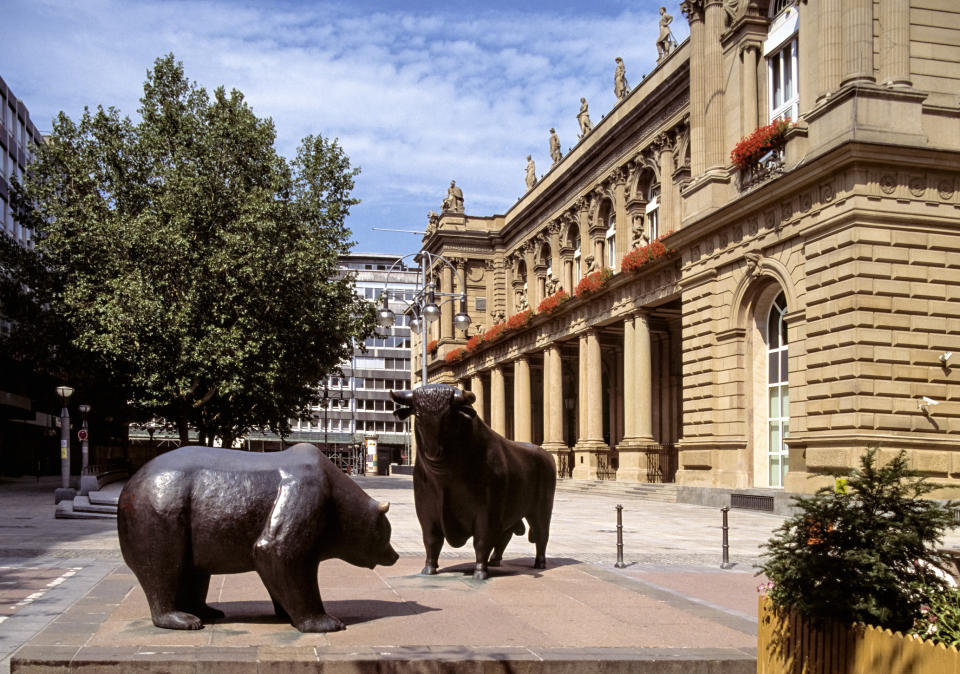Stock market panic has turned into market euphoria: What's next?

About 10 weeks ago, global financial markets were gyrating which spectacular falls in share prices, extreme volatility in foreign exchange markets and cascading prices for many commodities.
Investors were reacting to the inevitable recession and dislocation to business activities and profits from the economic lockdown that was being imposed in reaction to the coronavirus pandemic.
In Australia, the value of shares listed on the ASX fell a staggering 36 per cent in five weeks from its record peak recorded on 20 February.
Around three-quarters of a trillion dollars of market value was lost as investors dumped stocks.
More from The Kouk: 'Pretty bad': The Reserve Bank has called the economic depression
More from The Kouk: The $60 billion JobKeeper error: What went wrong?
More from The Kouk: House prices and Covid-19: How low will they go?
The Australian dollar, which had been edging lower from just above 70 US cent in December to 67 US cents in late March, was also pummelled. On 17 March is slumped to 55.1 US cents as investors feared the worst for the local economy and the Reserve Bank of Australia was poised to cut official interest rates to 0.25 per cent and embark on a form of quantitative easing.
At the same time, global commodity prices were in free-fall. Demand for oil, for example, slumped as airlines were grounded and drivers were stuck at home in self isolation.
The speed and magnitude of these market moves was extraordinary and understandable, such was the concern about the health crisis and the near certainty that the deepest economic contraction since the 1930s Great Depression was unfolding.
Fast forward 10 weeks...
From the low point, stocks, the Aussie dollar and commodity prices have staged remarkable recoveries.
For the ASX, it has risen around 37 per cent in just 10 weeks. The Australian dollar has jumped more than 15 US cents to around 70 US cents while oil prices have almost doubled and other commodity prices have been robustly strong.
Markets are pricing in at least a partial rebound in economic activity as the coronavirus is contained, at least to a point, and consumers and business slowly return to spending, investing and hiring.
What has driven the turnaround?
The market rebound has also been fuelled by a series of stimulatory economic policies around the world. Central banks have cut official interest rates to near zero or below, have undertaken different forms of quantitative easing and have provided liquidity to support the banking sectors and through them a range of businesses.
Governments around the globe have implemented substantial amounts of fiscal stimulus including wage subsidies, tax breaks for business, cash handouts, infrastructure and other spending. These measures are helping to provide a platform for a rebound in economic activity as the lockdown measures are eased.
What to expect
In Australia, it is likely that when the June data for indicators such as jobs, retail sales and motor vehicle sales are released, there will be huge percentage increases.
To be sure, some of this is because the low point recorded in April and May will be so disastrously weak, but it will also reflect the impact of the relaxation of the lock down rules and people return to cafes, restaurants, shops, airlines, sporting events and the like. There will be a sharp lift in activity but it will be from a deep recessionary low point.
This suggests the slump in June quarter GDP will be less than the 10 per cent Treasury and the RBA are forecasting. Current figuring suggests a quarterly fall of around 5 per cent.
The September quarter GDP is likely to be superficially strong, perhaps up 3 per cent, and implicitly, valid the recent market moves.
Risks ahead
There are a myriad of risks ahead.
The ending or winding back of a range of stimulus measures including JobKeeper and JobSeeker will erode household incomes and business cash flow.
After the so-called mortgage holiday banks will demand repayments resume. Borrowers will be confronted with higher debt. Renters will be especially vulnerable to eviction from their homes when the “no eviction” rules end around early October.
Low wages are set to continue – there are wide-spread public service wages freezes and many companies have cut wages. This will make it difficult if not impossible for household spending to remain strong through to the end of 2020.
And for those relying on income from investments will need to deal with near zero interest rates and the slashing of dividend payments. Spare cash for this cohort of the population will be scarce.
There are other risks.
The trade spat with China risks hurting the Australian economy as trade and investment flows stall. The government will need to tread carefully if China, Australia’s major export market reduces its demand for Australian exports.
The US Presidential election will likely see extreme policies from Mr Trump as he strives to regain faltering support – this could impact global markets and the economy.
In the end, the recent market moves are welcome. Wealth has been partially restored and investors are putting money where their mouths are in terms of pricing in some form of a decent economic recovery over the second half of 2020 and into 2021.
Let’s hope they are right.
Follow Yahoo Finance Australia on Facebook, Twitter, Instagram and LinkedIn.

 Yahoo Finance
Yahoo Finance 
